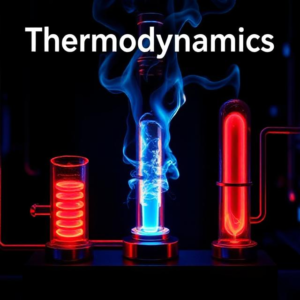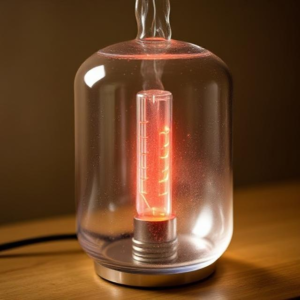1. Entropy
Entropy is a measure of disorder or randomness in a system. Think of it as a way of measuring how “spread out” or chaotic the energy in a system is.
- Low entropy means the system is organized or has a lot of structure.
- High entropy means the system is disordered or random.

Simple Example:
Imagine a box with gas molecules inside. If the molecules are all packed into one corner, that’s low entropy because they’re organized. But if the molecules are spread evenly throughout the box, that’s high entropy because the molecules are more randomly arranged.
In nature, systems tend to move towards higher entropy because it’s more likely for things to be in a disordered state than a highly ordered one.
2. Free Energy
Free energy is the energy in a system that is available to do work. It’s the difference between the total energy in a system and the energy that can’t be used because it’s tied up in disorder (entropy).
There are two important types of free energy:
- Gibbs Free Energy (G): This is used when talking about reactions or processes that happen at constant temperature and pressure (like chemical reactions in a lab).
- Helmholtz Free Energy (F): Used when temperature and volume are constant (this is more common in physics or thermodynamics).
Gibbs Free Energy Equation:
Where:
is Gibbs free energy.
is enthalpy (total heat content).
is temperature.
is entropy.
In simpler terms:
- Gibbs Free Energy tells us if a process will happen naturally. If
is negative (
), the process can occur spontaneously.
- If
is positive (
), the process won’t happen on its own and needs some input of energy.
3. Significance and Relationship Between Entropy and Free Energy
- Entropy and free energy are linked because both describe the direction in which a system moves. In most natural processes (like melting ice or burning fuel), systems tend to move towards higher entropy (more disorder).
- Free energy tells us how much “useful” energy is left for work, while entropy tells us how much energy is unavailable (because it’s spread out or disordered).
Key point: A spontaneous process is one that reduces the system’s free energy. This can happen in two ways:
- Increasing entropy: A system becomes more disordered, which makes it easier to do work (like a substance melting or evaporating).
- Releasing energy: A system may release energy (exothermic reactions) or reduce its internal energy to do work.
Real-life Examples:
- Ice Melting: When ice melts, it goes from an ordered state (low entropy) to a disordered liquid state (high entropy). This process happens spontaneously because the increase in entropy is more than enough to compensate for the loss of heat (free energy).
- Cellular Respiration: In your body, when you metabolize food (like glucose), you break it down into simpler molecules. This releases energy, which is captured in the form of ATP (adenosine triphosphate) to do work. The overall process of metabolism has a negative change in free energy (
), meaning it’s spontaneous and releases energy that the body can use.
Summary
- Entropy is the measure of disorder or randomness in a system. Higher entropy means more disorder.
- Free energy is the energy that can be used to do work in a system. It’s the part of the energy that isn’t wasted in disorder.
- Systems tend to move towards a state of lower free energy and higher entropy, which makes processes spontaneous.
- In simple terms: Spontaneous processes are those that increase disorder (entropy) and release free energy.











